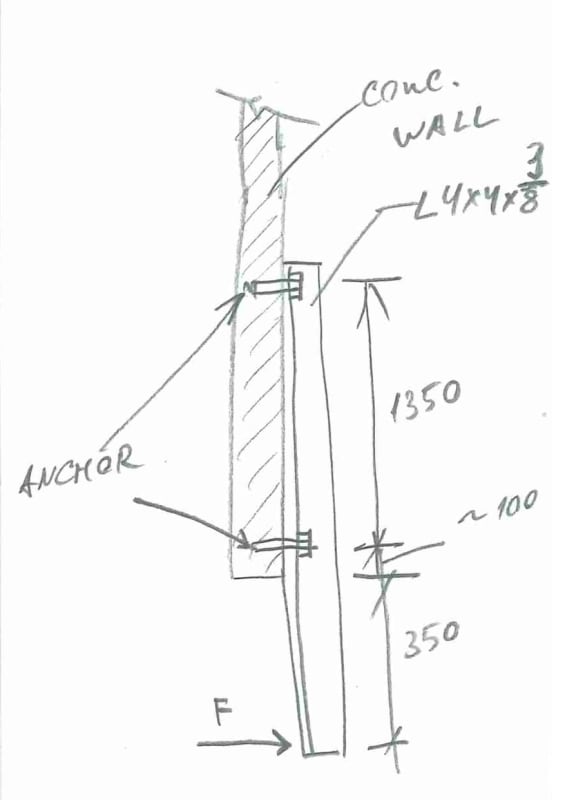Good day,
I'm dealing with a situation where I have cantilevering single angle supporting a point load at the cantilever end. The angle is oriented in such a way that the toe of the angle pointing in the same direction as the point load and is in compression. The angle is anchored to concrete wall with two anchors. Attached is the sketch which should help to understand the setup.
I'm trying to analyze lateral-torsional buckling moment using the F10.2 (2) of AISC 360-16 and it has the unbraced length term Lb. There is no explanation on what this Lb is other than the general explanation it being the distance between the lateral supports. The way I intend to connect the angle to the wall leaves the angle toe in compression technically unbraced at all. I'm looking for some advice as to what I should be using for Lb in my situation. Thanks

I'm dealing with a situation where I have cantilevering single angle supporting a point load at the cantilever end. The angle is oriented in such a way that the toe of the angle pointing in the same direction as the point load and is in compression. The angle is anchored to concrete wall with two anchors. Attached is the sketch which should help to understand the setup.
I'm trying to analyze lateral-torsional buckling moment using the F10.2 (2) of AISC 360-16 and it has the unbraced length term Lb. There is no explanation on what this Lb is other than the general explanation it being the distance between the lateral supports. The way I intend to connect the angle to the wall leaves the angle toe in compression technically unbraced at all. I'm looking for some advice as to what I should be using for Lb in my situation. Thanks

